Haut Bailly celebrates 15 years under Robert Wilmers: fabulous dinner, 15-vintage vertical
August 5, 2013
By Panos Kakaviatos
Setting the stage one year before
One of my fondest summer memories was enjoying Champagne and sandwiches as the sun set at Château Haut Bailly in August 2012. The estate has superb accommodations for professional guests, such as yours truly. I was working on a travel article at the time and the classically elegant rooms reflected the wines made at the chateau.
The winery and vineyards are located south of the city of Bordeaux, in the commune of Léognan. I love the drive, passing through gentle hills and small forests.
Along a country road leading to Haut Bailly one sees the charming Château La Louviere, whose wines are also excellent and very fairly priced. Other well known neighbors include Château Malartic-Lagravière, Château Smith Haut Lafitte and Château Carbonnieux.
While staying at Haut Bailly, the view was magnificent because the estate’s terroir was in plain sight.
Château Haut Bailly’s unique terroir sits on a 30-hectare (74 acres) vineyard at the heart of the Graves region on the left bank of the river Garonne.If great wine can come from a harmonious relationship between men and women, the vine, and nature, the most subtle of these three elements is perhaps the soil. Climate plays a more evident role in a given vintage – just read about the summer storms in Burgundy’s Côte de Beaune this year. But soils play a key role for the vines – and some can “handle” weather challenges better than others. Positioned on a high ridge of land, excellent for drainage, the soil at Château Haut Bailly is sandy and mixed with gravel, sitting on a layer of sandstone petrified with the remains of prehistoric fossil shells. Somehow this soil mix contributes to the special elegant character one finds in Haut Bailly wines.
Of course human talent is essential, and Gabriel Vialard is an excellent technical director. Haut Bailly benefits from the expertise of wine consultant Denis Dubourdieu, who favors freshness and elegance in wine – never too much extraction of tannin.
Just as a reminder, terroir encompasses topography – where a vineyard is situated, but also climate – sun, heat, rain, wind, humidity – and the soil in which the vines are grown.
Please read on. If you like, you can scroll down to my tasting notes from a 15 vintage vertical enjoyed at Haut Bailly during Vinexpo 2013, just before a special dinner at the estate (wines in bold I liked in particular, when red and bold even more, and – when underlined – the best). But read on for some history and for a description of a superb dinner!
A bit of history
The vineyard is believed to have been created during the 16th century by a rich family from the Pays Basque region. By 1630 it was acquired by the Parisian banker Firmin Le Bailly, who gave his name to the estate. A classification of the leading Graves châteaux by Wilhelm Franck in 1845 also illustrates that Haut Bailly had become well known by then, but came to be famous in 1872 when it was bought by Alcide Bellot des Ministères, a known vitculturist at the time.
At some point in this early period, prices for the wine rivaled first growth Medoc wines such as Latour and Lafite. But an early period of prosperity, such as the 1878 vintage judged outstanding among its peers, preceded a longish decline. The phylloxera issue was managed poorly for example. One owner neglected to follow the examples of other estates who combatted the disease, and instead of grafting, relied on spraying with copper ammonia solution. Early in the 20th century Haut-Bailly Franz Malvesin purchased the property and experimented with some questionable techniques, such as pasteurization and early bottling.
After his death in 1923 practices reverted to normal, though under the various following owners, the results were unremarkable. By the mid 1950s, Belgian wine merchant Daniel Sanders bought the property and inaugurated a prosperous period of quality that restored the terroir’s great reputation. It has been said that near the end of Sanders’ life the chateau went through a perceived dip in quality in the 1970s (although I had a 1978 in 2008 and it was delicious). Upon his death in 1980, his son Jean Sanders was able to resume progress. For several years the late oenologist Émile Peynaud – the father of modern winemaking in France – was retained at Haut-Bailly.
The current owner, since 1998, is the affable American banker Robert G. Wilmers, who has retained Daniel Sanders’ granddaughter Véronique Sanders as general manager. Gabriel Vialard, who had worked at Smith Haut Lafitte, was hired as technical manager. I was lucky to have been joined by both Véronique and Robert for a double vertical of Haut Bailly and Pape Clement in New York City in 2008. Many participants favored the freshness and elegance of Haut Bailly, as did I.
Here a blog link to that tasting:
http://whatbelongs.blogspot.fr/2008/01/rare-double-vertical-4-decades-of-haut.html
Magnificent dinner
To commemorate the 15 years since Robert and Elisabeth Wilmers bought the château, the staff put together a great dinner, both elegant and rich with flavor, a perfect reflection of the wine’s style. And the ambiance was international and interesting. In the video above, Haut Bailly director Véronique Sanders introduces Philipe Labbé, renowned chef of the restaurant l’Abeille (Shangri-La, Paris), who was recently awarded Cook of the Year by Gault & Millau. Nicknamed “the chiseller”, Labbé marries original products and traditional specialties, revealing his expertise. For the dinner, he rose to the challenge of highlighting a selection of rare wines from across the world: Domaine Roulot Meursault Clos de Mon Plaisir 2009, Harlan Estate 2005, Screaming Eagle 2006, Château Haut Bailly 1983 in jeroboam and Trimbach Gewurztraminer Sélection de Grains Nobles 2001. When that last wine was served, owner Jean Trimbach got everyone to sing along: “Trimbach, Trimbach, bring back my bottle to me, to me” – to much applause and laughter.
The food was magnificent, from a delicate and delectable starter of daikon ravioli that looked more like a gorgeous Impressionist painting (see picture above), by way of lamb served with aubergine caviar and a tasty Saint Nectaire cheese, ending with scrumptious mango pomelos with coconut.
The dinner wines were excellent, and I particularly loved the Roulot served from magnum, which showed no signs of either 2009 heat or premature oxidation: just a crisp and substantial Meursault from a top producer – and it went so very well with the first serving.
It was very interesting to compare Harlan and Screaming Eagle, two notable cult wines from Napa, both served with the lamb. Even though the Screaming Eagle is three times as expensive, I preferred the Harlan (it was in fact the 2005, and not the 2000 as listed on the menu), which seemed more Old World in style.
But what a classy act from Haut Bailly to have these legendary American wines for the main course. The Haut Bailly 1983 served from large format bottles was impressive, but slightly overshadowed by the New World force and gloss (particularly from Screaming Eagle) that preceded it.
Finally, the Maison Trimbach Gewürztraminer SGN 2001 was magnificent. Vivacious yet opulent, the wine exuded subtle spices like ginger and nutmeg, with floral aspects as well as ripe white fruits. Jean Trimbach noted that 2001 was certainly good for Sauternes, but also for late harvest Alsace wines. Trimbach? Trimbach? Bring back that bottle to me!
I did mention that the dinner gathered a very cosmopolitan group of merchants, vintners, writers and hacks lucky enough to get invited… In another speech to the guests, owner Robert Wilmers recalled that former French prime minister Dominique de Villepin had served Haut Bailly at the height of US-French tensions in 2003, noting that this great French wine was made by an American.
So wine rises above politics …
At our table, we spoke of wine unifying and not dividing – that is what a Canadian wine merchant remarked. But when I spoke with a Russian merchant, we got into a hot topic. He defended Putin and the way Pussy Riot members had been thrown in jail as “appropriate punishment” because “the church is sacred.” Whatever the case may be, everyone loved the wines that were served on 19 June, 2013, at the heart of the Vinexpo week in Bordeaux, to celebrate 15 years since the Wilmers purchased the estate in 1998.
Festivities started, before the aforementioned dinner, with a retrospective tasting of Château Haut-Bailly from 2012 to 1998. They came from all over the world, merchants and journalists and wine critics such as James Suckling and Bernard Burtschy, beating heavy Vinexpo traffic to make it to this truly special tasting and dinner.
Tasting Notes of the 15 year vertical of Château Haut Bailly before the dinner (wines in bold I liked in particular, when red and bold even more, and – when underlined – the best):
1998: 59% CS, 41% M. Cedar elegance. Cabernet seems to dominate here, and the overall perspective is one of youth. Given the quality of the Merlot and the finesse of the tannins, this will just get better with age.
1999: 65% CS, 25% M, 10% CF. A clearly more evolved nose here, with tertiary aspects approaching saddle leather and musk hint of animal that left me yearning for some steak. If you have this, it would be a good time to enjoy with your dinner.
2000: 50/50 M and CS. This seems to have the most opulence so far, especially on the attack, but then it seems to have a structured mid palate. I recall enjoying this more a few years ago and wonder if it may be closing down just a bit. Based on this tasting, I would not open any bottles now.
2001: 65% CS and 35% M. What a lovely nose of perfumed cedar and plum! The palate is juicy, and very drinkable (perfect illustration of the French term gouleyant). There is poise and polish. While not as broadly structured as more recent vintages, this is really in an excellent spot now and seems to be on a long plateau of drinking. If you have more than six bottles, I would open one this year.
2002: Similar blend to 2001, but a touch less Cabernet, a bit of Cabernet Franc. There is something more Medoc like about this nose, and I have enjoyed the 2002 in recent years as a very smooth expression of Haut Bailly. The evolution of this wine seems a bit faster than I had previously thought, however.
2003: One of my favorite red 2003s from Bordeaux outside the northern Medoc., exuding a refined and juicy opulence that seems to be getting better with age. Only the slight dryness on the finish suggests the vintage.
2004: Quite the opposite of the above. This wine is on a very slow evolutionary track, with tannins that are still fairly tight. I am beginning to prefer this to the somewhat comparable 2002, as having more body and more juiciness.
2005*: Could this be the very best vintage ever in the Robert Wilmers era? So large scaled without coming across as … large. So many impressive aspects, from the very long finish to the purity of the fruit (cassis, ripe red cherries, among others, from the finely grained tannins to the brightness of the lift. But – if you own this – do not dare opening any. It seems on the verge of closing down however, so if you have any bottles, let them sit for at least another five years before cracking one open.
2006: Certainly on a faster evolutionary track than the 2005, this wine is quite expressive today, opulent and inviting, if not quite as fine as the 2005. But let’s not quibble! This is a great bottle of wine, that will likely improve with some bottle aging but can actually be thoroughly enjoyed today.
2007: This vintage is not as good as most others. While I love the charm on the opening and a mid palate fruit, the finish is a touch hard. I would advise drinking this now with a nice barbecued steak, whose richness would be a nice foil to the tannins on the finish.
2008: I have the impression that the 2008 is in a closed phase, but the tannins are finer than those in the 2007. Still, I would let this bottle sleep. It needs time to resolve the tannins which are quite present.
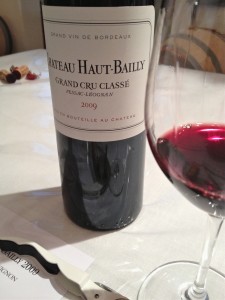
Great vintage at Haut Bailly, if not quite as good as the 2005. Let us see where it is four years from now!
2009: Another candidate for best bottle at the estate since Wilmers took over? Unlike, say, La Lagune, where the 2009 is rather classic and imposing, the Haut Bailly 2009 is at once ripe, juice filled and spherical without being too polished in a glossy and boring modern fashion. This wine has the charm and nuance that makes Haut Bailly so special but an added dimension of hedonism that invites any rational person to drink, drink and enjoy! A superb vintage at Haut Bailly.
2010: Here we have a more powerful style that – as in the past – reminds me a bit of the 2005. But I feel that the 2010 is more imposing than the 2005 and may not end up with quite as much charm. Of course, we are comparing wines that are five years apart, so I would think that the 2010 truly needs time to sleep in your cellar. There is “a lot going on” in this baby, and it promises to be an excellent adult.
2011: The 2011 reminds me a bit of the 2007 but a better version of it, because while both are charming, the 2011 seems to have more substance and length on the finish.
2012: Wow here we have a wine that to me at least seems better than the 2011. Yes, we all know that 2011 and 2012 were not the easiest of vintages, but I feel that Haut Bailly succeeded more in 2012, as the sample seems to have more finesse and grace and freshness.
Some conclusions
Most readers know that Château Haut Bailly is ranked among the premiers crus for red wine in the classifications of Graves of 1953 and 1959. The château only makes red wine (many other top estates in the region, such as Domaine de Chevalier, Pape Clement, Smith Haut Lafitte and the aforementioned Haut and La Mission Haut Brion also produce white wines), and it is remarkably consistent – proven in the 15-vintage vertical. That vertical convinced me that Haut Bailly can rival the very best of the entire Graves region, including Château Haut Brion and La Mission Haut Brion. Although prices have reached triple digits, making it hard for some people – yours truly as well – to acquire, the wines are superb.
Bravo to Robert Wilmers and Véronique Sanders and to the entire team, and many thanks to them for inviting me to such a special tasting and dinner.

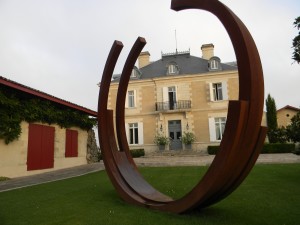
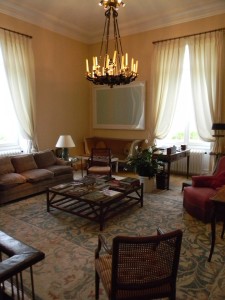
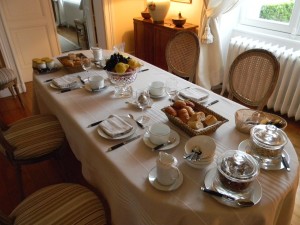

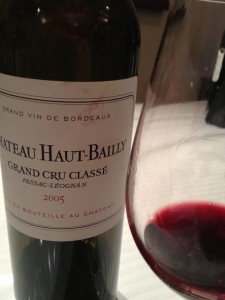

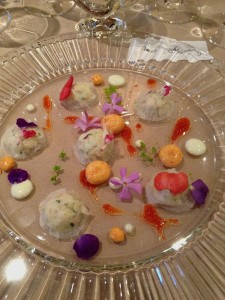
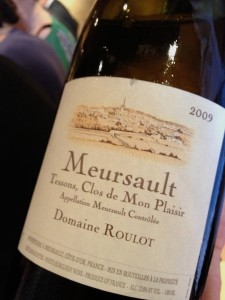
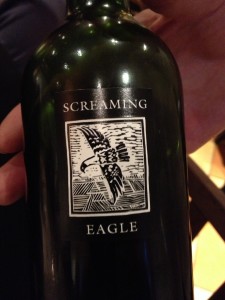
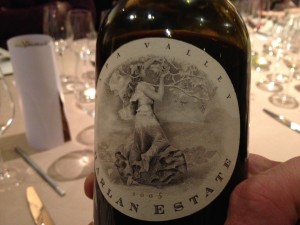
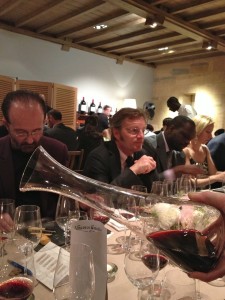
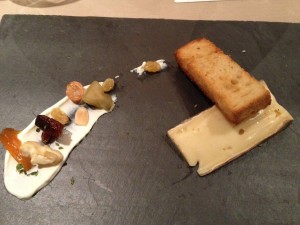
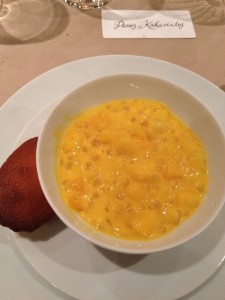
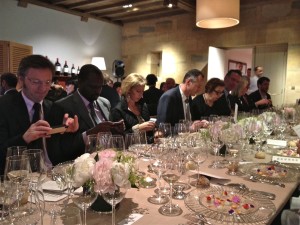
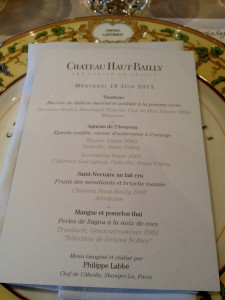
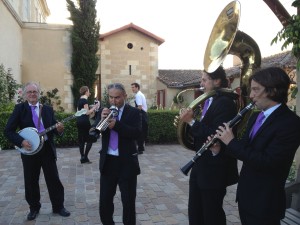
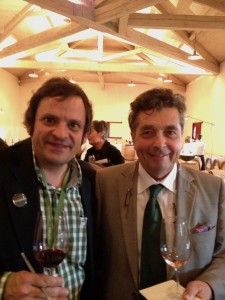
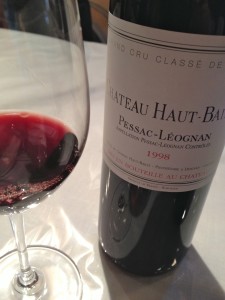
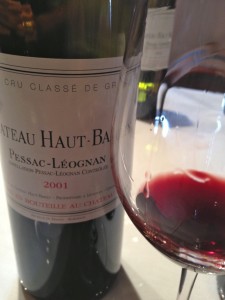

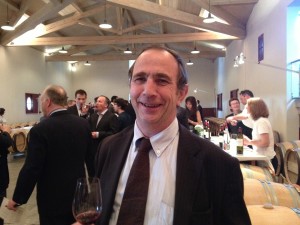
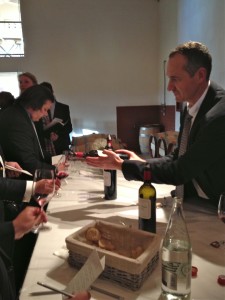
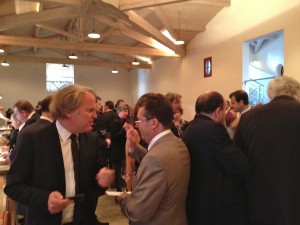
[…] tasting at Domaine de Chevalier with wines from Faiveley, Pol Roger, Zind Humbrecht and more / 15-vintage vertical and dinner at Chateau Haut Bailly / Vertical at Chateau La Lagune / Tasting the great wines of Paul Jaboulet, including 1990 and […]
Postscript to all who read this: Please do make any comments. I hope to be able to reply to any thoughts you may have on this or any other posts on my blog. Thanks for reading, Panos